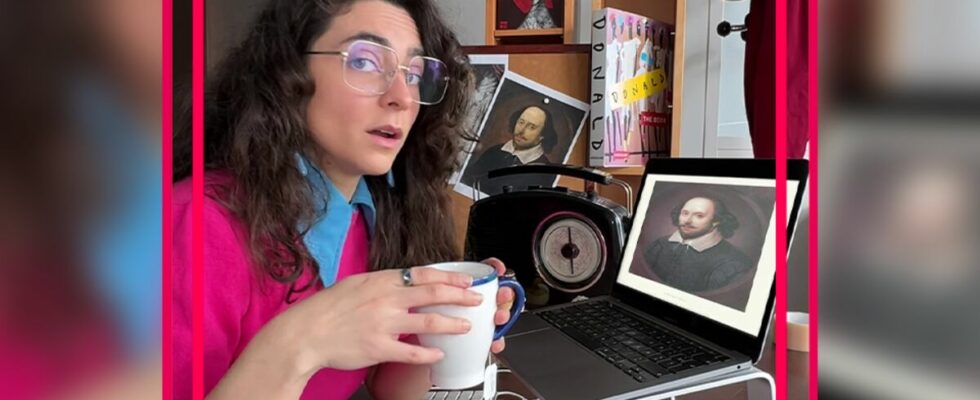More and more historians are doubting the identity of William Shakespeare. Indeed, no archive mentions a play, a piece of writing or even a theatrical encounter by William Shakespeare. How is it possible ? What if William Shakespeare was a woman? The author and heritage historian, Aurore Évain, helps the team Simone to paint a portrait of this Mary Sidney.
Mary Sidney, a very cultured and influential countess
William Shakespeare was the son of a glover. He didn’t really have an education since the village school, where the young boy grew up, closed when he was ten. It seems he doesn’t actually speak any other languages, nor has he traveled much. Regarding his family, his father, mother and children are all illiterate. Finally, at his death, again, there is no platform or eulogy for the great William Shakespeare. The historian Aurore Évain then recounts that in the 16th century, in the theater, plays often did not have an assigned author. “There are lots of pieces coming out, which are often anonymous“. She also explains that this name, Shakespeare, began to exist on the first editions. Only the spelling changes a lot, there was a “Shake-Speare” for example. But who is hiding behind it, we do not know Nothing.
If William is not William Shakespeare, then who is William? One theory then hypothesizes that William Shakespeare could be a woman. Perhaps this famous Mary Sidney, Countess of Pembroke, and surely the Englishwoman the best educated of her time. She was trained in literature, poetry, geography, medicine, she is also multilingual and she had an exceptionally important private library for that time. This thesis is owed in particular to Robin P. Williamsadapted here by Aurore Évain. But then, why Mary Sidney and not another? Well, many aspects of her life would directly echo Shakespeare’s plays: her family and social ties, the places she lived and the way she lived her romantic and intimate life. The royal festivities of July 1575 at Kenilworth Castle inspired several scenes or images of the Dream of a summer night. Events, at which the young woman was present, since it was her uncle’s castle. In addition, Mary Sidney had introduced Seneca into English literature and theater. And as luck would have it, Shakespeare’s plays are very inspired by the works of Seneca.
A feminist reading of Shakespeare
But then, why didn’t she sign her own name? As Aurore Évain explains, it was absolutely impossible as a great lady of the aristocracy. At the time, there weren’t even any actresses on the professional theater stage. If she was required to sign her name, that meant signing her clan name. That is to say, the name of her husband or even her father. It was therefore synonymous with danger, while knowing that the written pieces were politically subversive. “I think that’we were so far from imagining that a woman could writequite simplyt” affirms the historian. Nevertheless, one of Mary Sidney’s occupations was to translate. Be careful, we are a long way from just typing words into Google Translate. Because his translations were art! She reinvented blank verses, unrhymed verses and even words. Nor are there any archival manuscripts which claim that Mary Sidney wrote Romeo and Juliet or Hamlet as confirmed by the author. However, a coincidence, why not, even two or three: “But there we arrive at so many coincidences“.
Eventually, if we analyzed the works of Shakespeare, perhaps we could make one feminist reading and perceive a certain “female gaze”. Scenes with so-called feminine activities are important. The dramas are due to the madness of men, sisterhood is rather important, the female characters are powerful. Perhaps William Shakespeare was simply (already) deconstructed, but if we are talking about the actor who abandoned his wife and children to “go and do theater in London”… Be careful, the historian is not saying that Mary Sidney is Shakespeare. According to her, there would be no point. While we manage to make a monument around the name of William Shakespeare and this man from Stratford, Mary Sidney, we have it completely forgotten. “It’s even surprising, because all the candidates that have been put forward for Shakespearean identity, they all cross Mary Sidney’s path at one point” declares Aurore Évain. Perhaps we will never know who William Shakespeare really was. And perhaps it was not just one person but a collective where women surely had their place.
